Contact: A Cybernetic Sculpture

Created by renowned Cybernetic artist Les Levine in 1969, Contact: A Cybernetic Sculpture is a wall of 18 CRT television screens arranged as a pair of three by three grids which show video of the viewer through close-up shots, wide-angle imagery, and a simple medium range portrait. Using an array of eight cameras contained in […]
Brushstroke

 Taking the ideological cluster of gesture, authenticity and originality as his foil, in the mid-1960s, artist Roy Lichtenstein caricatured the abstract expressionistic brush-stroke in a cartoon style with a background comprised of Ben-Day dots – a commercial printing technique used by newspapers to reproduce cartoons. Paradoxically, he initially mocked this eviscerated but iconic signifier in a series of unique paintings, only later reproducing them as serigraphs.
Taking the ideological cluster of gesture, authenticity and originality as his foil, in the mid-1960s, artist Roy Lichtenstein caricatured the abstract expressionistic brush-stroke in a cartoon style with a background comprised of Ben-Day dots – a commercial printing technique used by newspapers to reproduce cartoons. Paradoxically, he initially mocked this eviscerated but iconic signifier in a series of unique paintings, only later reproducing them as serigraphs.
Electronic Peristyle

 This interactive art installation or “reactive environment,” to use the artist’s term, was first shown at the William Nelson Rockhill Gallery of Art in Kansas City as part of the Magic Theater exhibition in 1968. Developed with the assistance of Robert Moog, the pioneering inventor of electronic musical instruments, Electronic Peristyle employs digital circuits to control a sound synthesizer, fans, and lights. Twelve electronic columns surround a transparent globe set on a cylindrical base. Light beams emitted from the base, like spokes on a wheel, strike sensors on the columns. By breaking the beams, the participator alters the sound, light patterns, and wind effects.
This interactive art installation or “reactive environment,” to use the artist’s term, was first shown at the William Nelson Rockhill Gallery of Art in Kansas City as part of the Magic Theater exhibition in 1968. Developed with the assistance of Robert Moog, the pioneering inventor of electronic musical instruments, Electronic Peristyle employs digital circuits to control a sound synthesizer, fans, and lights. Twelve electronic columns surround a transparent globe set on a cylindrical base. Light beams emitted from the base, like spokes on a wheel, strike sensors on the columns. By breaking the beams, the participator alters the sound, light patterns, and wind effects.
Contact: A Cybernetic Sculpture

This article is a STUB please make edits and adjustments as suggested on Wikipedia to make it more robust. Thanks! Contact: A Cybernetic Sculpture by Les Levine LES LEVINE produced two installations, Iris (1968) and Contact: A Cybernetic Sculpture (1969), which were important predecessors to Wipe Cycle, although less complex. In Iris, […]
Participation TV

Participation TV is another interactive-participatory piece created by video artist Nam June Paik (1932-2006) in 1969. The piece lets the participant control the visuals on the TV screen through speaking or making sounds through a microphone, so as they are making noise they are able to see the line and formations made on the screen instantaneously. […]
Joseph Kosuth’s Five Words
Five Words in Blue Neon by Joseph Kosuth FIVE WORDS IN BLUE NEON (above image) is the exact description of what this work displays. This glorious, florescent glow of blue neon spelling the simple phrase “FIVE WORDS IN BLUE NEON” contains a particular aura in what this work portrays.[1] With the work displayed […]
Heart Beats Dust

Jean Dupuy really begins to take advantage of and enhance our perception of the world around us. Dupuy does this by transducing one sense into another, allowing the viewer to experience that sense in a different way than ever before. For example, the work Heart Beats Dust, exhibited in "The Machine" in 1968, takes an organic process […]
Infinity Chamber


Electronic Moon No. 2


Electronic Moon No. 2
[video src=http://www.youtube.com/watch?v=Yr-by3B3Ypk]Kino-Automat

 Billed as “the world’s first interactive movie,” Kino-Automat was shown in a specially-built theater in the Czech Pavillion at Expo ’67 in Montreal.
Billed as “the world’s first interactive movie,” Kino-Automat was shown in a specially-built theater in the Czech Pavillion at Expo ’67 in Montreal.
Continuel – Lumiere – Cylinder
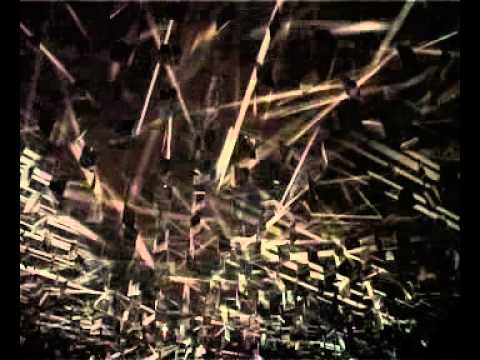
According to artist Julio LeParc, a member of GRAV in Paris, our “first experiments with light were conducted in 1959: We place the light in small boxes which reproduced, multiplied and combined with the screens made of Plexiglas slates, prisms, squares and circle shapes, using a scale of 14 colours. Like in other experiments it […]
Homage to New York
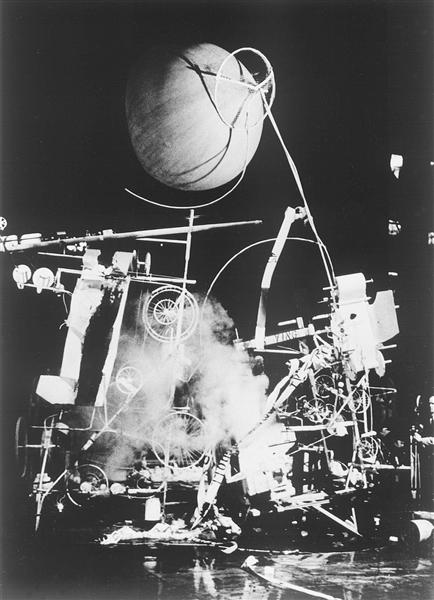

Cloud Canyon, Cloud Fruits

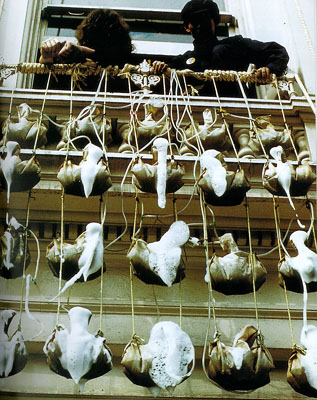
Music for Solo Performer – for enormously amplified brainwaves and percussion

[video src=http://www.youtube.com/watch?v=bIPU2ynqy2Y align:left]EEG electrodes attached to the composer/performer Alvin Lucier’s scalp detect bursts of alpha waves generated when the performer achieves a meditative, non-visual brain state. These alpha waves are amplified and the resulting electrical signal is used to vibrate percussion instruments distributed around the performance space.1
Movie-Movie
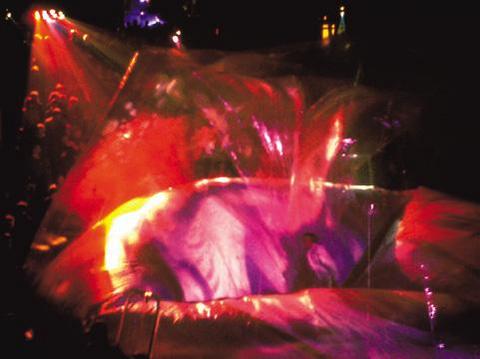

Catso Red
News
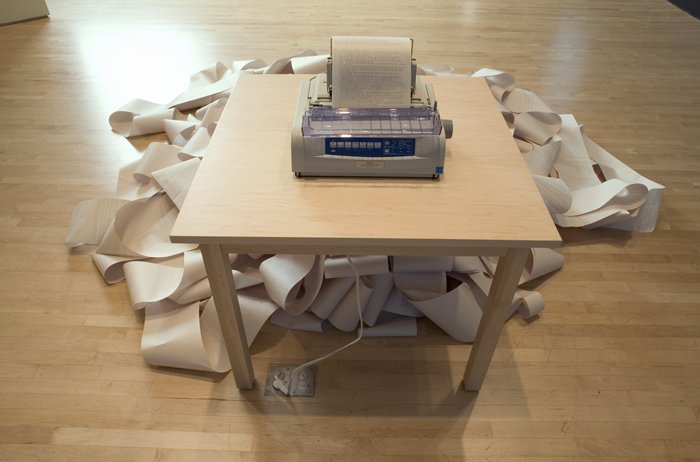
Cybernetic Serendipity – Press Release and Poster
Press Release for the exhibit curated by Jasia Reichardt at the ICA London August 2nd to October 20th, 1968:
Greens Crossing Greens: to Piet Mondrian Who Lacked Green
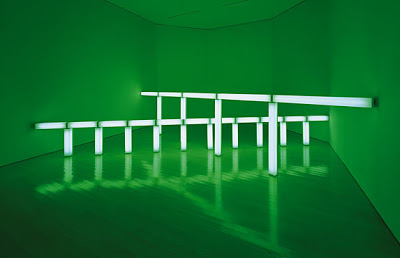

The Art and Technology programme (A&T)
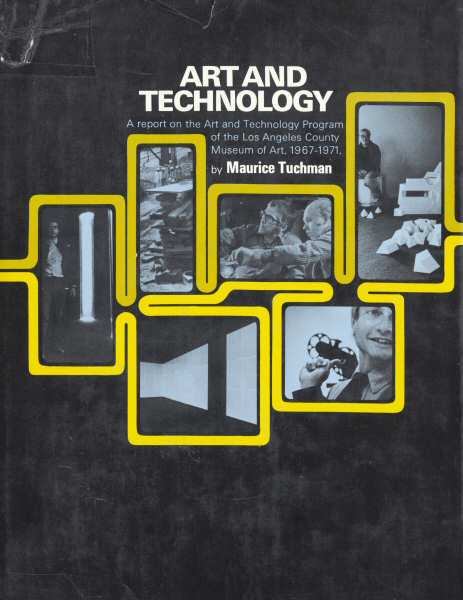 [1]
[1]
Son et Lumière for Bodily Fluids and Functions
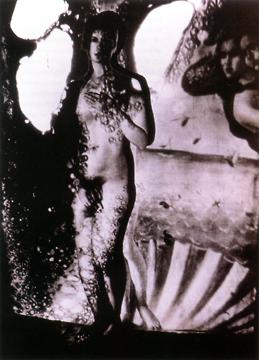
 [1]
[1]
9 evenings: theatre & engineering

 Perhaps the most influential event joining art and technology in the 1960s, 9 evenings was held in October 1966 in New York.
Perhaps the most influential event joining art and technology in the 1960s, 9 evenings was held in October 1966 in New York.
Charles Csuri, Fragmentation Animations, 1968 – 1970: Hummingbird (1968)
[video src=http://www.youtube.com/watch?v=awvQp1TdBqc]Bridget Riley’s works
Bridget Riley speaks about rhythm and repartition in her work.
[video src=http://www.youtube.com/watch?v=jwY-eKlnCSg]Igloo di Giap
[video src=http://www.youtube.com/watch?v=CG9FkdpMrUA]Morton Heilig, Pioneer in Virtual Reality

Cybernated Art
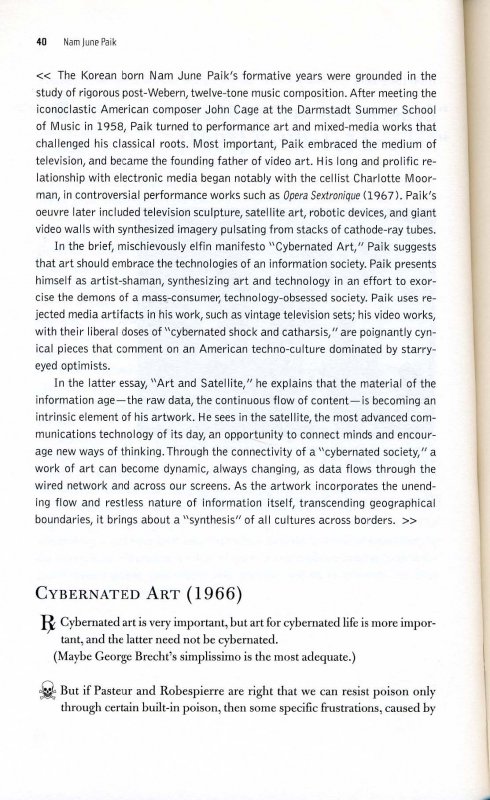
Robot K456

“Nam June Paik and Shuya Abe created one of the first art robots. Robot K456 with 20-Channel Radio Control and 10-Channel Data Recorder, 1965, was an
Wipe Cycle
 Gillette and Schneider’s Wipe Cycle confused, intrigued and excited viewers who were surprised to find themselves on television screens where commercial programming or taped images of other people
Gillette and Schneider’s Wipe Cycle confused, intrigued and excited viewers who were surprised to find themselves on television screens where commercial programming or taped images of other people
Poem Field No. 2: Life Like
[video src=http://www.youtube.com/watch?v=BMaWOp3_G4A]Beatles Electroniques
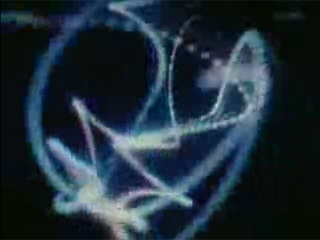
 [1]
[1]
The Friendly Grey Computer-Star Gauge Model 54
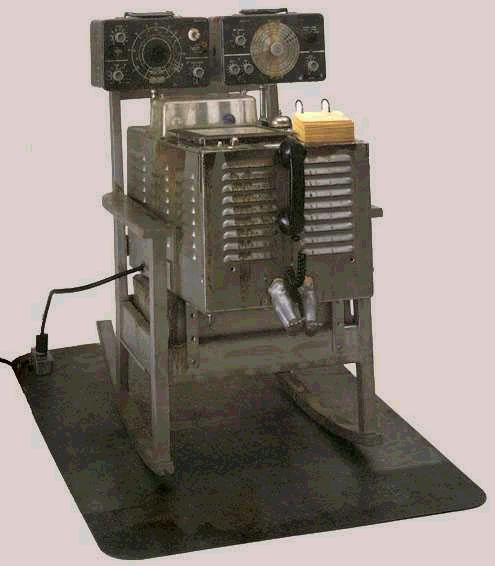

Love, Hate & The Machine (Review of Machine exhibition at MOMA, 1968)

Darwin (programming game)
“Tierra is a derivative of the computer programmers’ game Core War. And Core War was in part inspired by a game called Darwin.
Distribution of elementary signs
"The procedure has a layered structure and three independent pictures are generated within the format. […]The three pictures combined here use small squares and two kinds of triangular shapes as their elementary signs. They are of different colours. Within their fields, the squares follow an exponential distribution (it shows in the concentration of square heaps). […]
Computer Composition With Lines

“Computer Composition With Lines” 1964 This work closely mimics the painting “Composition With Lines” by Piet Mondrian.
Catalog
[video src=http://www.youtube.com/watch?v=TbV7loKp69s]The Originale
[video src=http://www.youtube.com/watch?v=wiEJdOlgcDE]TV Bra for Living Sculpture
TV Bra For Living Sculpture (1969) is a crucial work within Nam June Paik’s career. Consisting of two miniature televisions attached to a set of vinyl straps so that the screens functioned as the cups of a woman’s bra, this sculpture was designed to be worn by Paik’s collaborator Charlotte Moorman as she performed […]
